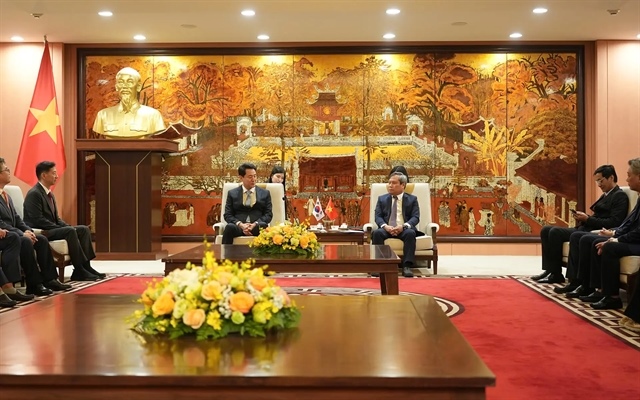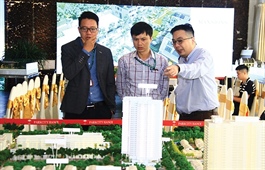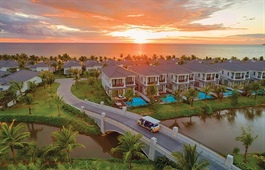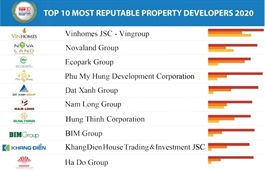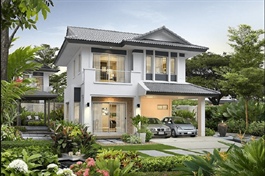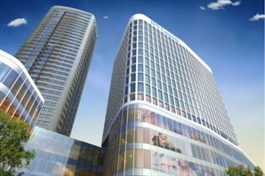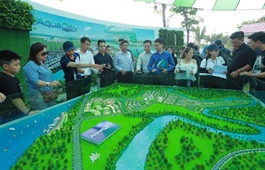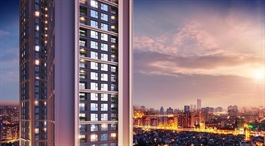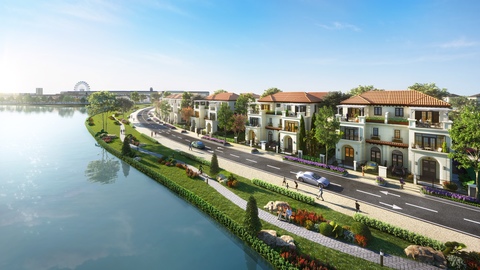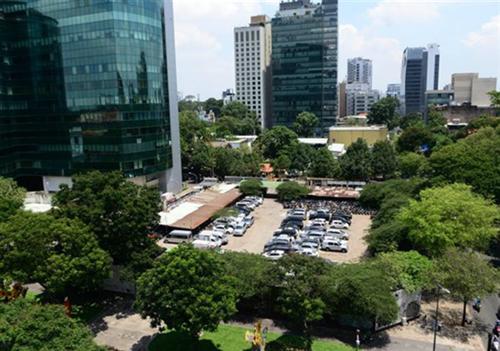Smart strategy of Novaland stirs up realty market
Smart strategy of Novaland stirs up realty market
Novaland Group, one of the most well-known private real estate developers in Ho Chi Minh City, has set the target of growing its revenue by 36 per cent on-year to nearly VND14.88 trillion ($646.96 million) and net profit by 8 per cent to VND3.365 trillion ($146.3 million) in 2020. To achieve these goals, the group will focus its business strategy on three core product lines, namely inner city real estate, satellite real estate, and resort real estate, which underpins Novaland’s sustainable development in the coming decade.
Novaland leaders’ vision
In 2020, Vietnam’s economic growth is expected to slow down due to the effects of the coronavirus (COVID-19) pandemic. The Vietnamese government has envisaged two scenarios for the country’s economic growth this year.
In the first scenario, if important trade and investment partners of Vietnam can control the epidemic from the third quarter of 2020, Vietnam’s GDP growth can reach about 4.4-5.2 per cent this year, with the construction-industry sector likely growing by 6.7-7.9 per cent. In the second scenario, if the pandemic control is delayed to the fourth quarter, Vietnam’s GDP growth may be only 3.6-4.4 per cent, with the construction-industry sector gaining 5.8-6.7 per cent.
| In the medium and short terms, Novaland will focus on existing projects and research the expansion of land bank in the eastern part of Ho Chi Minh City, besides its three core product lines. |
In this context, Novaland has recently approved a draft plan and strategy for 2020. Through this, Novaland professes steadfast business strategy focusing on the three core real estate products in the inner city, in satellite areas, and in localities with convenient transport connections and rich tourism potential.
As a leading real estate investor in the southern region, Novaland has set the target of increasing its revenue by 36 per cent on-year to nearly VND14.88 trillion ($646.96 million) and net profit by 8 per cent to VND3.365 trillion ($146.3 million) before its 2020 general shareholders’ meeting.
The firm’s management board identifies 2020 as a challenging year but its long-term strategy will not change. In the medium and short terms, the group will focus on existing projects and research the expansion of land bank in the eastern part of Ho Chi Minh City, besides its three core product lines.
Why “three core” strategy could be Novaland’s trump card?
Ho Chi Minh City’s urbanisation rate is expected to reach 80-90 per cent by 2030, while city policy restricts the licensing of new housing projects in the inner city to avoid population pressures related to transportation as well as electricity and water infrastructure.
This has created a significant challenge for the real estate industry to both optimise the value of “prime land” in the inner city area and develop projects meeting the housing needs of local citizens.
Aside from maximizing the value of the land fund in the downtown area, Novaland has also expanded investment to satellite urban areas in a move that both aligns with the population migration to suburban areas and the emerging demand for quality living space.
Vietnam is among the three fastest-growing countries in the world in terms of the number of super-rich people (individuals owning assets of more than $30 million each) with a growth rate of 12.7 per cent each year.
This rapidly expanding group of super-rich is looking for products such as luxury apartments, penthouses, and villas worth millions of US dollars. This is a potential customer group for Novaland’s real estate projects in the inner city.
The group has grasped this key trend by deploying more than 40 housing projects in inner Ho Chi Minh City from 2007 until 2019, a time when Novaland focused on housing projects in Ho Chi Minh City, going from the very first Sunrise City Complex Residential area (District 7) to a series of residential real estate projects with the distinctive mark of the green Rubik’s cube.
The group currently has 14 projects planned for development in the eastern, western, and southern Ho Chi Minh City areas, and one project for development in Dong Nai province.
The group also plans to hand over eight projects in the four above areas and develop two new ones in District 2 and District 9, in the city east. Typically, Aqua City (Bien Hoa, Dong Nai) smart ecological urban area are garnering growing attention from customers.
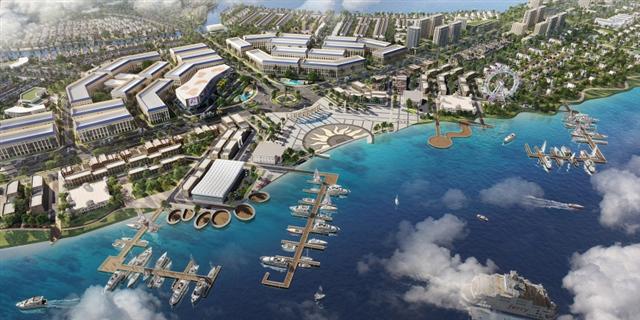
Aqua City by Novaland – a smart ecological urban area in Bien Hoa, Dong Nai
|
In the resort real estate segment, Novaland continues to deploy large-scale projects such as NovaWorld Mekong (Mekong Delta), NovaWorld Phan Thiet, NovaHills Mui Ne Resort & Villas (central Binh Thuan province), and NovaWorld Ho Tram (southern Ba Ria-Vung Tau province). These resort urban areas are expected to meet the needs for rest and entertainment with a series of second-home resorts, hotels, golf course complexes, sports and healthcare facilities, theme parks, and entertainment centres, as well as a variety of other dining and service options.
In addition, Novaland’s resort urban areas are all located in prime locations with favourable transport infrastructure to bring additional value.
In the future, when transport infrastructure projects such as the 99km Dau Giay-Phan Thiet Expressway and the 200km Dau Giay-Lien Khuong Expressway are opened for traffic, it will take only two to three hours to travel from Ho Chi Minh City to Novaland’s resort areas. This promises to turn these resorts into ideal weekend getaway or holiday destinations with good location, convenient travel, and a full range of international utilities.
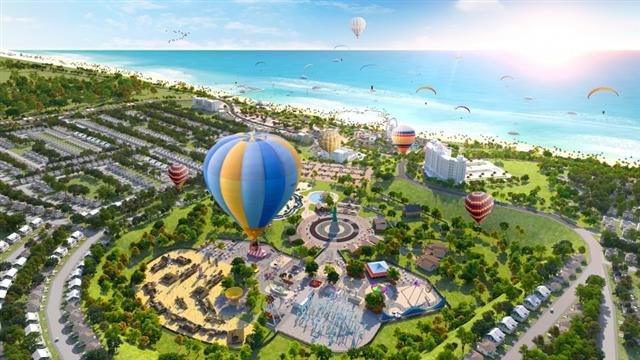
Novaland's NovaWorld Phan Thiet tourism and entertainment complex stretching over 1,000ha in Phan Thiet, Binh Thuan
|
The “three core products” business strategy will help Novland develop sustainably over the next ten years. This group has quickly chosen the right path and set out to expand its distribution channel to increase customer access.
In addition, Novaland has constantly invested and teamed up with partners owning home, school, hospital, food, and entertainment services to create ecosystems of worthy services to meet the needs and exceed the expectations of the community.


